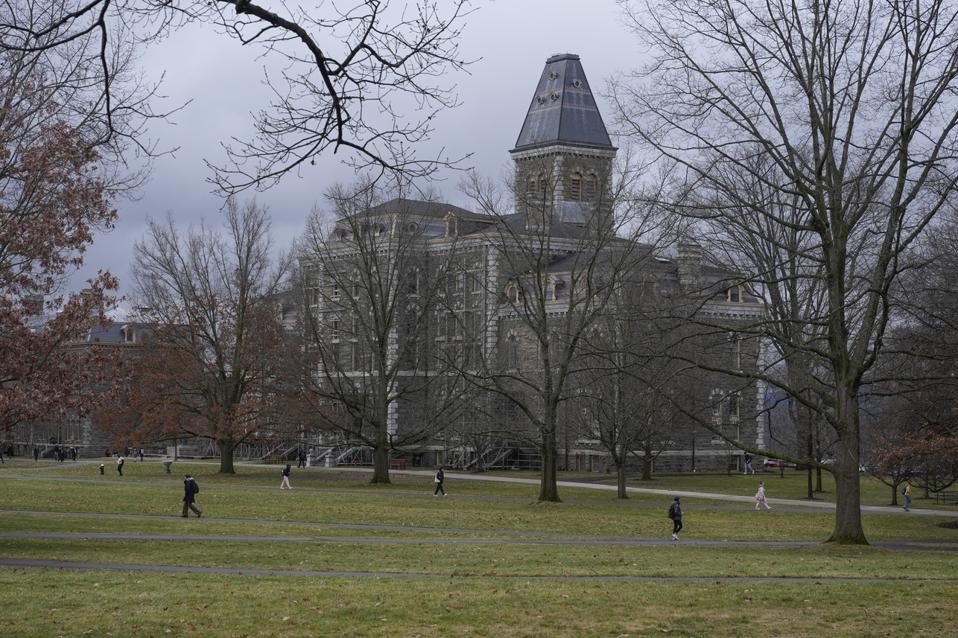Last year, a survey of college and university Presidents found them to be quite confident in the both the long and short term viability of their respective institutions.
A year later, they still are.
That’s according to the most recent survey of Presidents by Inside Higher Ed (IHE), the industry publication.
And just as it was a year ago, it’s welcome information. This version of the annual survey can’t rightly be called news, in that it’s not new. Or unchanged. In fact, the optimism of college’s top leaders is as unwavering as it is robust.
In the 2023 survey, 83% of Presidents reported confidence that their school would “be financially stable over the next five years.” Seventy-nine percent said they had confidence of stability over a ten-year horizon.
This year, the survey shows that 82% have confidence in their five-year financial outlook and 80% have confidence over the next decade. Perhaps best of all, according to the report, “Very few presidents (3 percent) are not at all confident that their institution will exist as a freestanding college or university” by 2030.
If you care about the future of education, the economy, or the stability of the country, those numbers are assuring.
They are also further evidence that the higher education apocalypse that many people have predicted, invested in, and cheered for, simply may not be coming. Year after year of waiting at the gates for any word, any sign of massive disruption in higher education has produced very little evidence, if any at all. Instead, the information we keep getting – a rebound in enrollments, the cost of college continuing to decline, degree preference among hiring managers, student satisfaction in their college choices, confidence from school leaders – tells the opposite story. It has happened so frequently that perhaps it’s time for those who have long been predicting a massive upheaval in higher education to be called upon to explain its lack of arrival, as well as their continued expectation for it to materialize.
While we wait for that, there are other noteworthy points in the new survey.
For example, Presidents seem somewhere between lukewarm and downright ambivalent about the impact of AI on higher education. While half of the Presidents who responded said they were either “somewhat” or “very” optimistic about the impact of AI, the “very” slice of that was just 12%. It also means that half of college and university Presidents are either neutral on AI or concerned – 30% said they were concerned.
Fewer Presidents are also considering institutional mergers, according to the survey. Last year, 27% said their institution should consider a merger. This year, just 17% say so.
Two-thirds of Presidents say they are either “very” or “extremely” concerned about “the state of public confidence in higher ed today.” But just 36% say that tuition prices and affordability are responsible for the state of public confidence and 27% say that lack of colleges to prepare graduates for the workforce is a factor.
Among the largest contributors to a public lack of confidence in college is partisanship and the associated rejection of all institutions. College Presidents probably either know this or sense it. So, there’s some validation in the data that respondents view lack of confidence in college as a problem, but realize that it’s not necessarily to do with anything schools are, or are not, doing.
It’s also worth pointing out that it appears that IHE did not survey Presidents of for-profit colleges this year. Last year’s survey did. It’s a good change. For-profit schools are in a completely different business than the public and non-profit ones, and they tend to view things quite differently.
It’s a bid deal that college Presidents are confident, and have been. Few people have better vantage points or better information about what’s going on in higher education than they do. It does not mean they know everything. But they clearly know a great deal and their views should matter.
If this was a survey of several hundred CEOs of retail businesses or CEOs of technology companies, we’d rightly treat a finding that 82% are confident over the next five years as a barometer of good market conditions ahead. But this is education, where people with less information and experience are sure they know better.
Which means that, as we tend to do every time there’s good news, the stable and upward perspectives of these insiders and experts will be glossed over and dismissed, while the next person who predicts a system-wide collapse of higher education will get more headlines. It’s the sad zeitgeist and self-destructive loop we’ve been stuck in for some time now.

